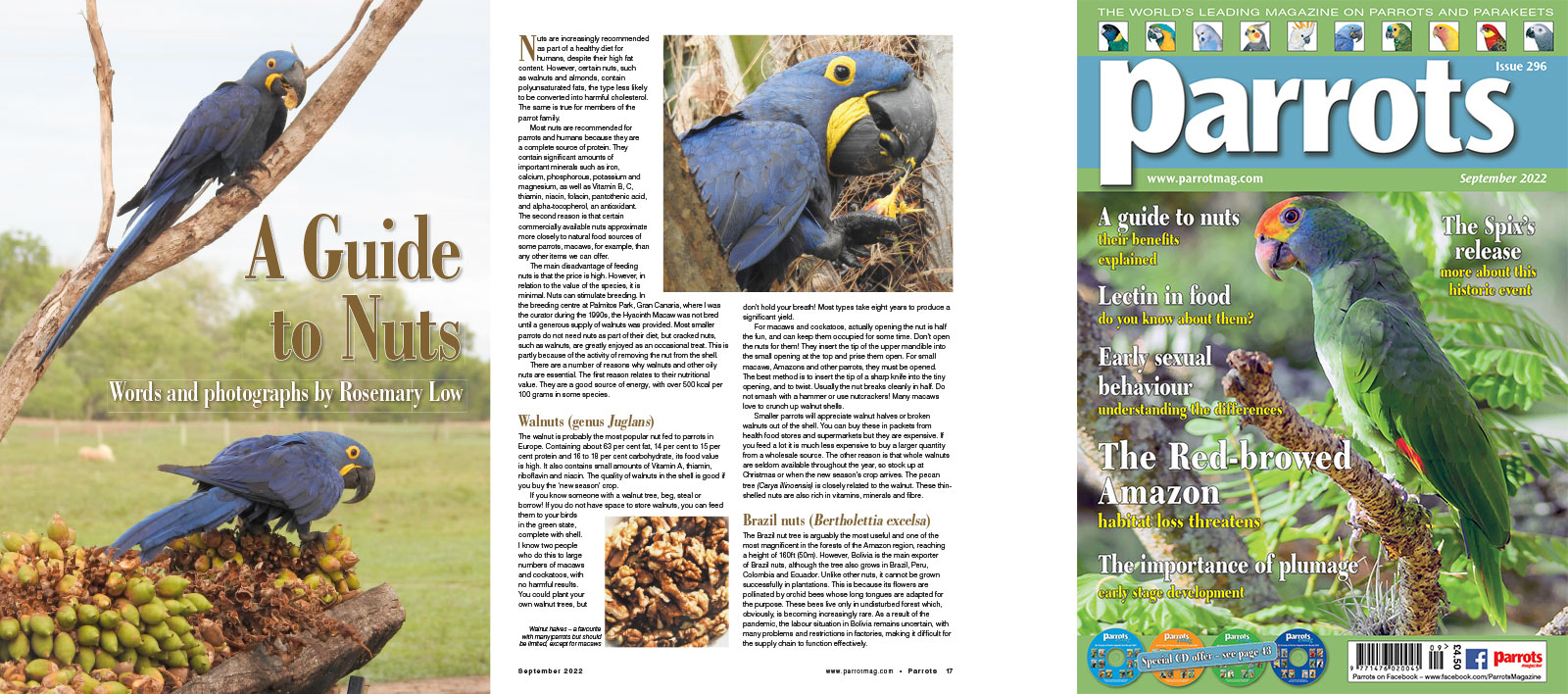
Words and photographs by Rosemary Low
Nuts are increasingly recommended as part of a healthy diet for humans, despite their high fat content. However, certain nuts, such as walnuts and almonds, contain polyunsaturated fats, the type less likely to be converted into harmful cholesterol. The same is true for members of the parrot family.
Most nuts are recommended for parrots and humans because they are a complete source of protein. They contain significant amounts of important minerals such as iron, calcium, phosphorous, potassium and magnesium, as well as Vitamin B, C, thiamin, niacin, folacin, pantothenic acid, and alpha-tocopherol, an antioxidant. The second reason is that certain commercially available nuts approximate more closely to natural food sources of some parrots, macaws, for example, than any other items we can offer.
The main disadvantage of feeding nuts is that the price is high. However, in relation to the value of the species, it is minimal. Nuts can stimulate breeding. In the breeding centre at Palmitos Park, Gran Canaria, where I was the curator during the 1990s, the Hyacinth Macaw was not bred until a generous supply of walnuts was provided. Most smaller parrots do not need nuts as part of their diet, but cracked nuts, such as walnuts, are greatly enjoyed as an occasional treat. This is partly because of the activity of removing the nut from the shell.
